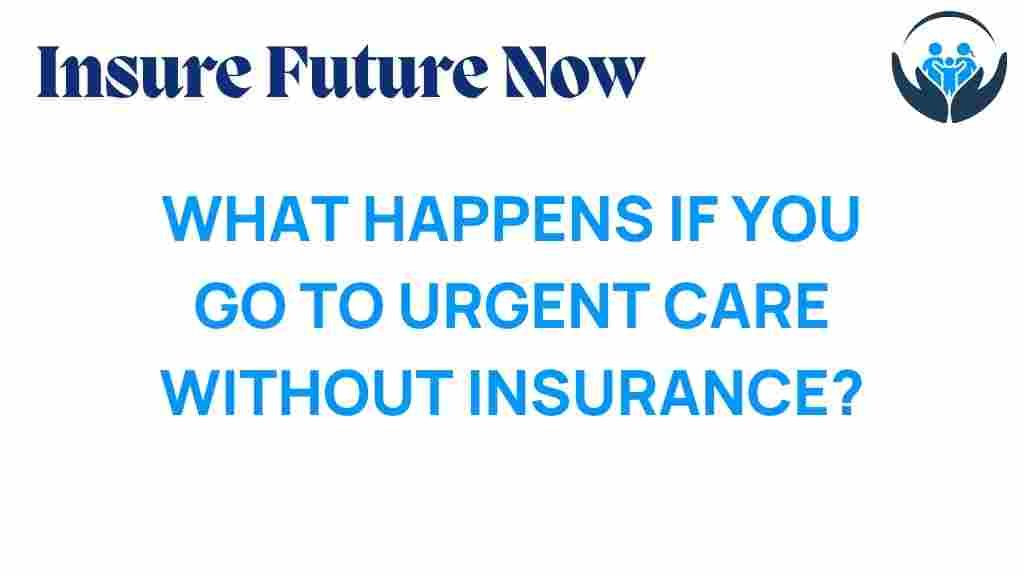The Hidden Costs of Urgent Care: What to Expect Without Insurance
When you find yourself in need of immediate medical attention, urgent care centers often appear to be a convenient solution. However, for uninsured patients, the costs associated with these facilities can be daunting. Understanding the potential medical expenses, healthcare costs, and billing practices involved is crucial for making informed decisions. In this article, we will explore the hidden costs of urgent care for uninsured patients, shedding light on what to expect and how to navigate these financial challenges.
Understanding Urgent Care Services
Urgent care centers are designed to provide immediate treatment for non-life-threatening conditions that require prompt attention. These facilities bridge the gap between primary care physicians and emergency services, offering a range of services including:
- Minor injuries such as sprains and fractures
- Infections, including urinary tract infections and skin rashes
- Respiratory illnesses like colds and flu
- Diagnostic tests such as X-rays and lab work
While these services are invaluable for treating acute health issues, uninsured patients often face unique challenges regarding urgent care costs.
Medical Expenses for Uninsured Patients
Uninsured patients typically encounter significantly higher out-of-pocket expenses compared to those with insurance. Here are some key factors contributing to these costs:
- Facility Fees: Urgent care centers often charge facility fees, which can vary widely depending on location and the level of care provided.
- Provider Fees: In addition to facility fees, patients must also pay for the healthcare providers’ services, which can add to the total bill.
- Tests and Procedures: Diagnostic tests, such as X-rays or lab tests, can significantly increase medical expenses. Uninsured patients are responsible for these costs without any negotiated rates.
Understanding these components can help uninsured patients prepare for potential healthcare costs when visiting an urgent care center.
How Urgent Care Billing Practices Work
The billing practices of urgent care centers can often be confusing, especially for uninsured patients. Here’s what you should know:
- Transparent Pricing: Not all urgent care facilities provide transparent pricing. It is essential to ask for an estimated cost before receiving treatment.
- Payment Plans: Some urgent care centers offer payment plans for uninsured patients, allowing them to spread costs over time.
- Negotiating Bills: Uninsured patients can sometimes negotiate their bills. It’s worth contacting the billing department to discuss the charges and see if discounts are available.
Being proactive about understanding billing practices can help mitigate some of the financial burdens associated with urgent care visits.
Patient Rights and Financial Aid Options
Uninsured patients should be aware of their rights and the financial aid options that may be available to them:
- Right to Information: Patients have the right to request information regarding costs and treatment before receiving care.
- Financial Aid Programs: Many urgent care centers participate in financial aid programs, which can help reduce costs for low-income patients. It’s advisable to inquire about such programs upon arrival.
- Charity Care: Some facilities offer charity care options, which can assist uninsured patients with covering their medical expenses.
Understanding patient rights and available financial aid can empower uninsured patients to make informed decisions regarding their healthcare.
Step-by-Step Process for Visiting Urgent Care as an Uninsured Patient
Here is a step-by-step guide for uninsured patients considering a visit to an urgent care center:
- Research Facilities: Look for urgent care centers in your area and compare their services, costs, and reviews.
- Call Ahead: Contact the facility to inquire about pricing, payment options, and any available financial aid programs.
- Gather Important Information: Prepare a list of your symptoms and any relevant medical history to provide to the healthcare provider.
- Request an Estimate: Before receiving care, ask for an estimate of the total cost for your visit, including tests and treatments.
- Discuss Payment Options: Inquire about payment plans or discounts if you are unable to pay the full amount upfront.
- Follow Up: After your visit, review the bill carefully, and don’t hesitate to reach out to the billing department for clarification or negotiation.
By following these steps, uninsured patients can better navigate the urgent care experience and manage their healthcare costs effectively.
Troubleshooting Tips for Managing Out-of-Pocket Expenses
Managing out-of-pocket expenses can be challenging for uninsured patients. Here are some troubleshooting tips to help alleviate financial burdens:
- Keep Records: Maintain detailed records of all medical expenses, bills, and communications with healthcare providers.
- Explore Community Health Resources: Look for local community health services that may offer low-cost or sliding scale options for uninsured patients.
- Use Online Tools: Utilize online platforms to compare prices for urgent care services and find the most affordable options in your area.
- Seek Help from Nonprofits: Nonprofit organizations often provide assistance with medical bills and can help you navigate available resources.
Implementing these tips can help uninsured patients manage their healthcare costs more effectively, reducing the stress associated with unexpected medical expenses.
Conclusion
Visiting an urgent care center without insurance can lead to hidden costs and significant out-of-pocket expenses. Understanding the medical expenses, healthcare costs, and billing practices associated with urgent care is essential for uninsured patients. By being aware of patient rights and exploring financial aid options, patients can better navigate their healthcare needs and mitigate the financial impact of urgent care visits.
If you’re seeking more information on healthcare costs and patient rights, visit HealthCare.gov for valuable resources. Additionally, consider checking out this guide for more insights on managing medical expenses.
This article is in the category Claims and created by InsureFutureNow Team
